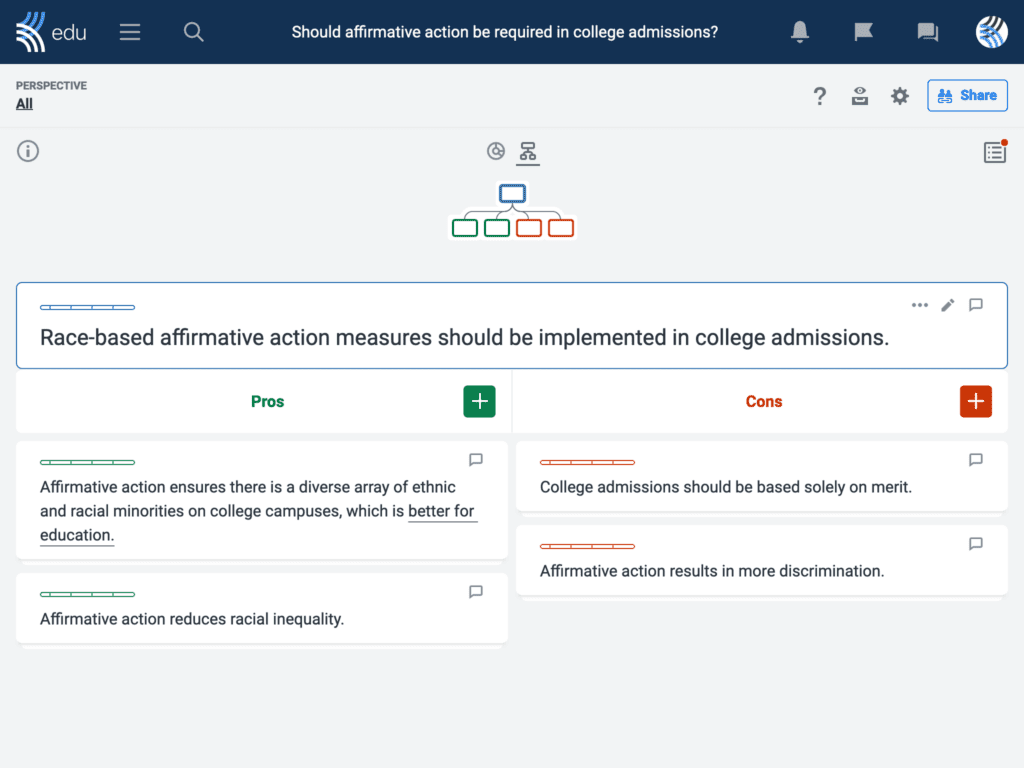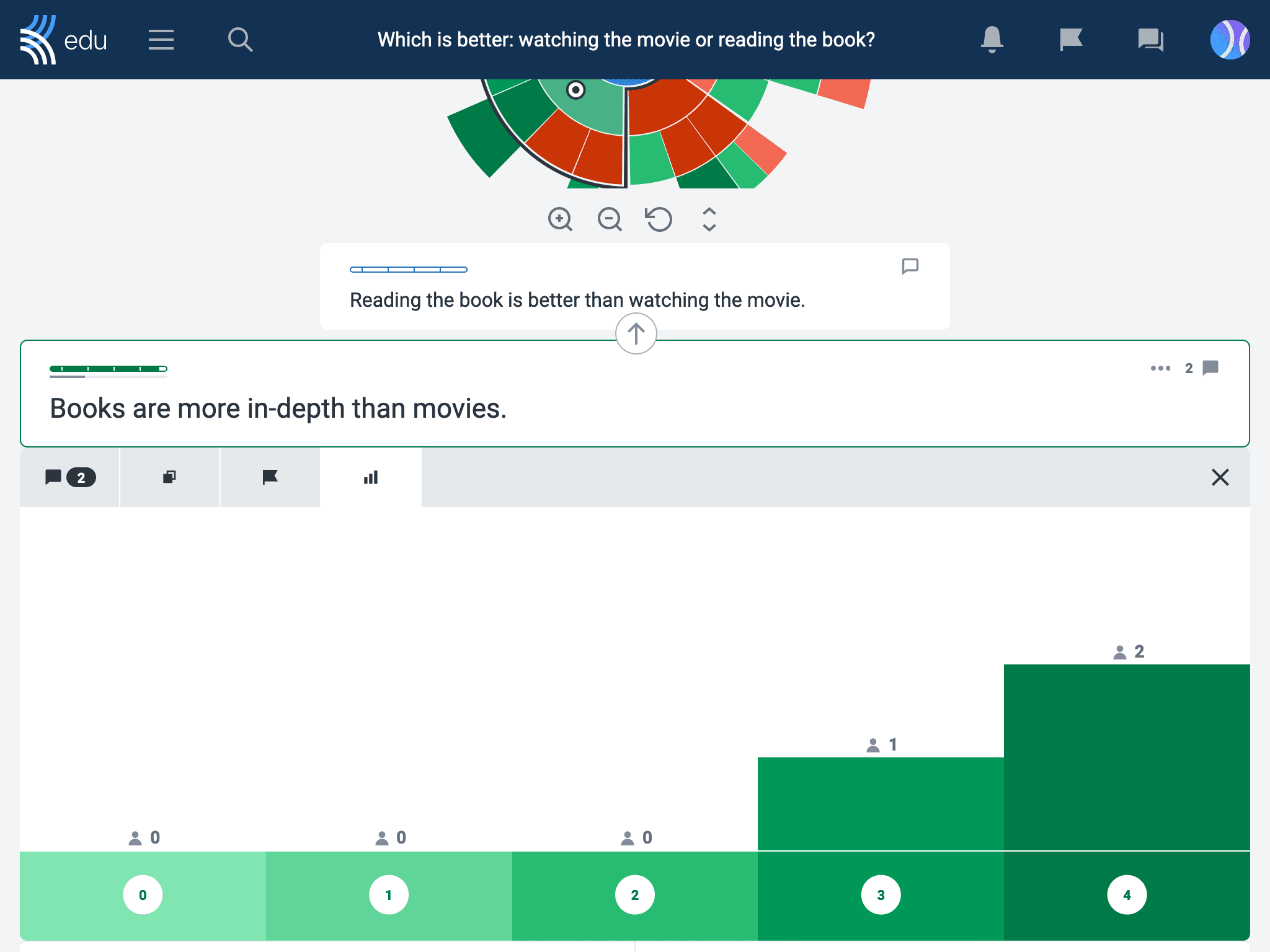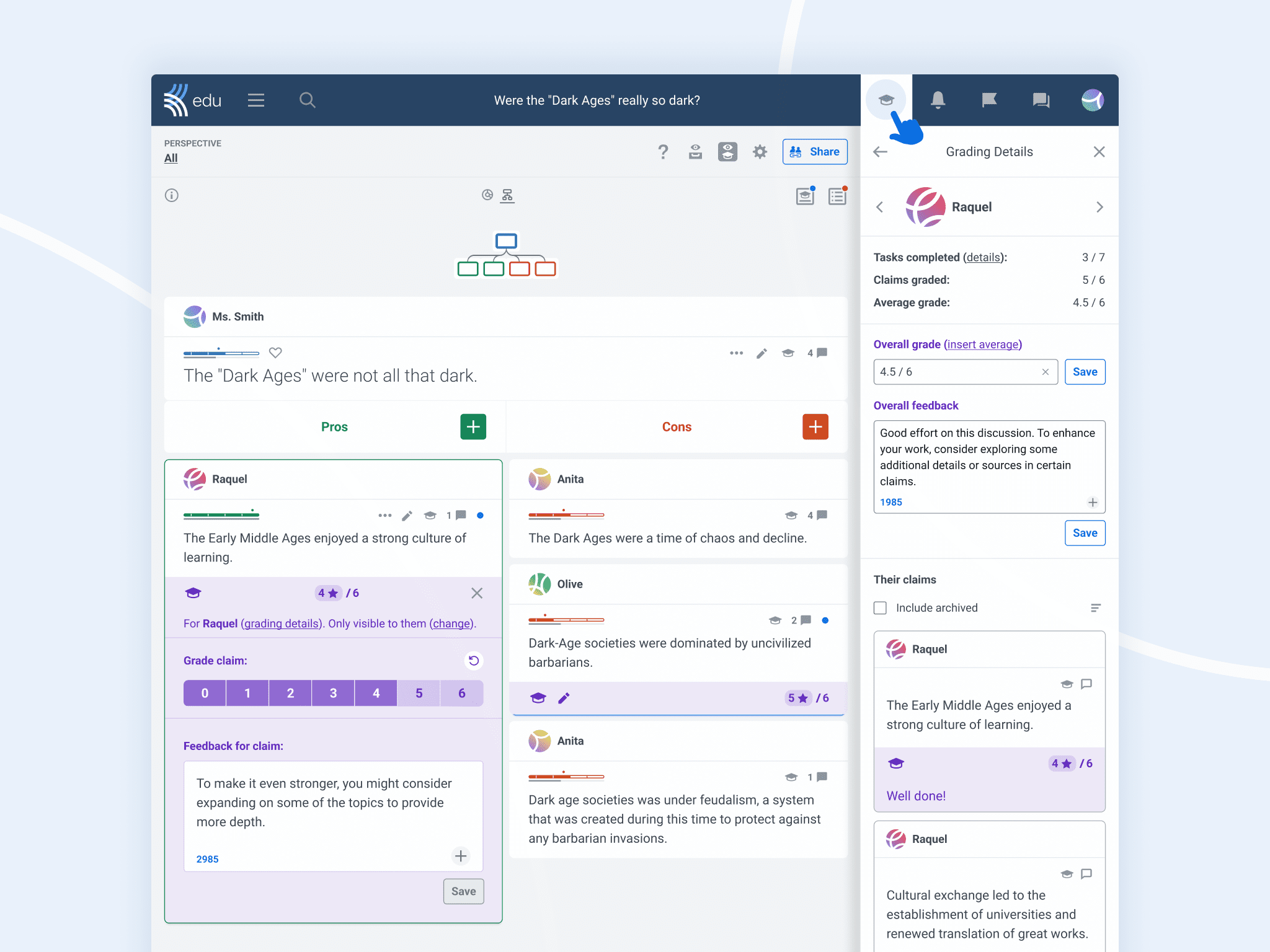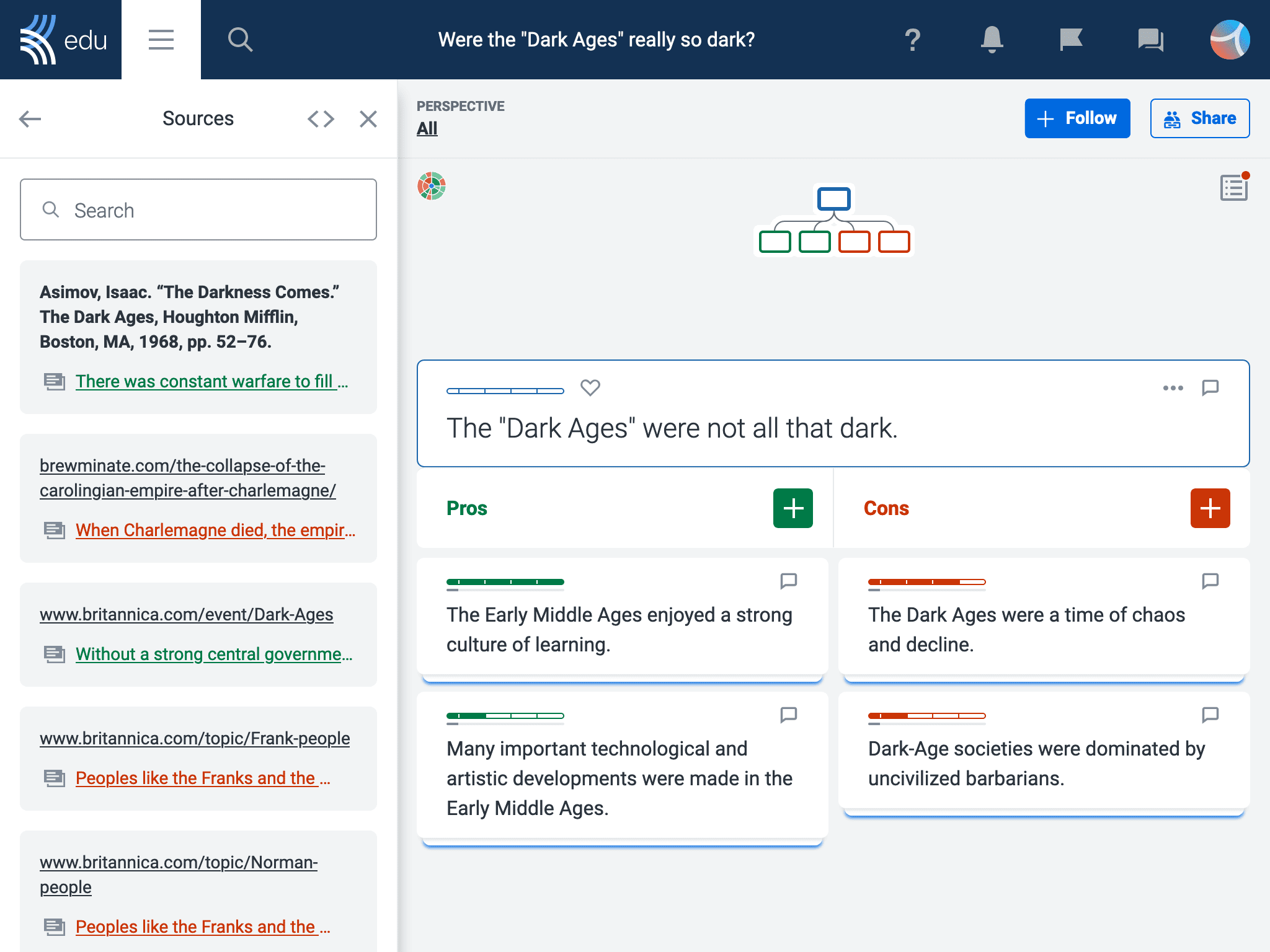Being a debate coach means ensuring your students become knowledgeable, skilled, and eloquent thinkers. However, even for the most experienced coaches, delivering on these expectations can be a challenge, especially when working with nervous students and limited resources.
To overcome these barriers, educators can use Kialo Edu for skill-based learning (for free!), so students can improve their argumentation skills beyond the confines of training times.
Kialo Edu is an essential tool in any debate coach’s toolkit. Its argument-mapping structure makes it easy for students to conceptualize arguments, identify gaps in their cases, and learn how to make the most of their preparation time.
Below are some of our favorite ways to use Kialo Edu to enhance your students’ skills and give them a better chance of bringing back those shiny trophies.
1. Build comprehensive cases and excellent arguments

We’ve all got our favorite prompt structure to teach students to flesh out an argument. Whether you use PEEL (point, evidence, explain, link), IEA (idea, evidence, analysis), or your own perfected model, students always need that initial guidance to start structuring good, well-supported arguments.
But doing that next level of analysis — where every key premise is supported, conclusions follow naturally, and evidence is woven in instinctively — that takes practice! Kialo Edu’s pro-and-con structure gives students the guide rails and nudges them to spot the gaps in their own argumentation and develop stronger and better arguments.
Coaches can use Kialo Edu to teach argumentation in many ways. You can use it to build debate cases as a group or have each student write their own version of an argument for practice. Or, even use it to have students compare strong and weak arguments that you’ve prepared beforehand. Whatever you do, students will be challenged to make stronger, better-supported versions of their arguments.
In particular, students can use Kialo Edu to practice properly fleshing out their cases. The pro-and-con structure means that they are able to organically spot when their cases are missing analysis or entire arguments, or don’t engage well with the other side.
An example task would be to have students map out the arguments they used in a debate and those they encountered from the other side. Then, ask them to point out three changes they’d make to each side if they encountered the topic again. Such an exercise trains students to think more broadly and helps improve their ability to anticipate arguments from the other side in debates.
Kialo Edu can also help break students out of the habit of reading rather than delivering their speeches. The discussion structure encourages students to break down their arguments into simple dot points rather than writing out speeches in full. This is also great for pre-prepared debates, where students can export the Kialo discussion to use as the base of their speech notes.
2. Identify the central questions
One of the challenges for debate students is identifying the burden of proof or central questions posed by the debate topic, without which winning a debate can be immensely difficult.

In a Kialo discussion, students can vote to identify the arguments they think are most persuasive or most important to the debate. They can then discuss where and why they disagree with each other about which arguments to prioritize. Students can also link claims to show how arguments rely on each other or are key to challenging arguments from the other side.

Students can use the Background Information space in each Kialo Edu discussion to summarize essential questions. Ask students to write a summary of the major clashes and thematic areas in a debate. This helps students practice effective framing and contextualization for debates, which helps them focus on the most important issues when engaging live with opposing teams.
3. Provide useful feedback to students
Teachers can easily analyze their students’ case-building abilities and identify areas of potential improvement in a Kialo discussion. For example, if a student is unable to provide sufficient multi-angled counterarguments for parent claims, it might show that the student needs to focus on developing their rebuttal skills.
This insight can help you give more specific tasks to that student (i.e., working with another student to create a minimum of three counter-arguments for each claim in a small discussion). This is a more efficient way of training their skills, without the need for them to conduct multiple full debates to identify and work on the problem.

For coaches with more time, use Kialo Edu’s Teacher Feedback to give clear feedback under individual claims. Teacher feedback can be hidden from all but the claim author, letting you give private feedback in the moment. You can also add general comments in the Discussion Chat to guide your students in approaching a task properly, making efficient use of both your and the students’ time.
4. Encourage personal research on debate topics
Specific assignments, such as writing the background info for a debate or adding sources to each claim, teach students to research their ideas and build a diverse knowledge base. All Kialo discussions automatically organize reference information in the Sources sidebar, which students can easily access as a reading catalog on the debate subject.

Having practice debates on Kialo Edu helps students get used to building comprehensive case files on important topics. Building good research habits — including learning to analyze the credibility and relevance of sources — will help your students get better at backing up their arguments.
5. Extend your coaching time with interactive homework
Coaching time is never sufficient, especially ahead of major debating events. With Kialo Edu, you can extend the hours beyond training sessions by assigning students interactive assignments that allow them to practice their argumentation skills.
You can even assign specific Tasks for students to complete at home! This asynchronous setup lets you supervise their work and offer feedback in a timely and time-conscious manner. Best of all, you can do these assignments with any number of students and any amount of time available.
We hope that you’ll give these ideas a try the next time you’re prepping your students for a debate tournament! With Kialo Edu’s pro-and-con structure of argument mapping, the possibilities are endless to sharpen your students’ critical thinking and argumentative skills! If you do try it out, please let us know at feedback@kialo-edu.com or on any of our social media platforms.
Want even more ideas on teaching debate and argumentation to students? Explore our collection of expertly-crafted resources!

